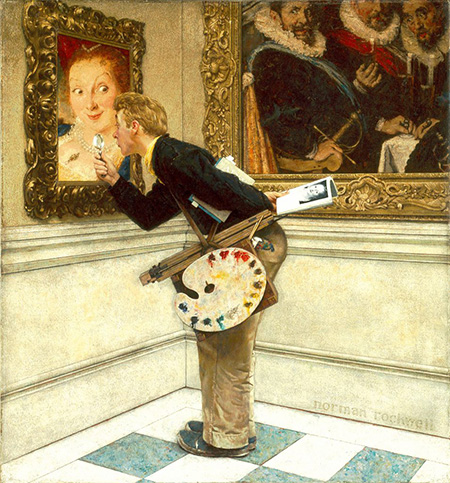
It is not news that as so many newspapers and magazines have shriveled or shut down that many have suggested that, along with other species of journalism, traditional art writing is now an endangered species. Not that there have ever been more than a handful of full-time art critics around the country; the vast majority were freelancers publishing sporadically back half a century ago, and that remains a fact of life. Oh, to be a staff writer on salary! To suggest that there was a golden time during which art criticism, or any form of cultural writing, was a well-stocked and lucrative field is a fantasy.
My purpose in noting this is not to gripe about the actual or supposed death by dearth of a beloved sub-genre of journalism (it is, after all, what we do around here), but to refresh your understanding of why it is in fact vital and important. That it even exists is a product of devotion, after all, not avarice. The economics of art criticism has never been the magnet for the talent it attracts. Don't make me laugh.
That you are reading this stuff sets you apart just as surely as your heading off to view exhibitions. It's not an isolating activity, but it is not as widely shared as a lot of other options, and what it expresses is, well, different. That's what we are seeking, it's our necessarily ironic common ground. Artists and writers have something to say that they feel is compelling, and that it is urgently worth your time and attention to engage. If they are serious, they are trying to change you. Art critics' ethos is that they want to steer you in the right direction so that art deserving of your eyes, mind and heart can do its thing. If providing you with a handle, a perspective on what you will see (or have viewed already) is valid, the point is not to provide you with a solution. It's to set you on the right path with the inspiration for you to have a heightened experience. Good and great critical writing does that, but it also offers an experience all its own when you read it. The best can be literature just as surely as art can be historical.
What a lot of us worry ourselves about (I plead guilty!) is whether are there still very many people with the inclination and aptitude to read? The equivalent concern for those of us who prize the experience of art is whether there are still very many people who pay sufficient attention to what they see to be changed by it. There's work involved. The world as we now know it places 280 characters and 72-pixel reproductions in the foreground of our daily experience simply thanks to the ubiquitousness of the hardware (sorry, the devices). The sheer volume of cheaply available content has shifted our psychology into a constant hurry-up mode to get through as much collectively shared material as possible. This is to ensure that our own consumption of skimmed information compares to that of our peers. It helps us stay informed of the references made by late night talk show hosts. When I was a kid, families buying a new model car each year and getting the first color TV on the block was called "keeping up with the Joneses." Now we substitute in the Kardashians to blend that same charge of mainstream gratification with the anxiety of missing out on something important. The fear of "missing out," rather pathetically, turns out to be what is "important."
I am fond of saying that the best art criticism amounts to a great story (the art it broaches) well told. It conveys the creativity of others with its own authentic response. It possesses a breed of intellectual athleticism that always makes me visualize the back and forth of a tennis match. But the service and return are on separate playing surfaces: the gallery and the magazine (or digital platform). The exertion between the contestants spills over to us, the spectators. Banging between the reading and the seeing it transforms us into active participants, into players ourselves. When it works, it functions as a fluid system of communication and response, and you are in the game, you are there on the court in the midst of the action. Damn if it isn't better than courtside seats let alone an opportune selfie.
Be careful though. The illusion is that good writing, like good art, makes it look easy. I'll forego the clichés that go with that to just close with the motivation for this little love note. I've had the privilege to edit and publish many, many art writers over the years, and have appreciated each of them. I enjoy helping them shed light on aesthetic experience, and it never grows tiresome watching their struggles and their victories, looking over their shoulders, so to speak, as they exercise their voice to illuminate the mysteries of the visual. You are among that minority (our readership!) who takes the time to do more than the too minimal demands of today's culture. And good for you, because it gives you an unfair advantage. Art critics are hardly alone but are among an indispensable breed of intellect that keeps us alert to the possible, not merely the obvious.
